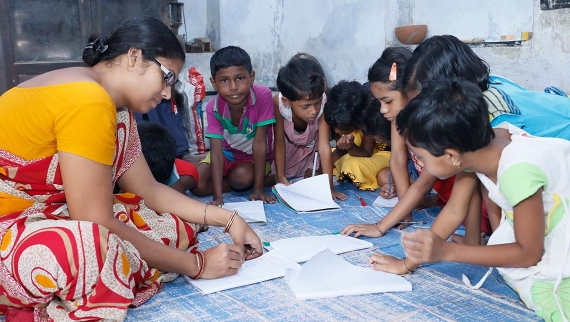Major hiccups in the Indian rural education system
by Joyeeta Gupta Social WorkerThere is a huge gap between the rural and urban education systems in India. Read the major hiccups and ways to resolve them.
According to data and studies, India's rural and urban education systems are vastly different. The number of institutes or schools in urban and metro areas is enormous. In addition, these institutions have enough infrastructure and teachers. Rural schools, however, lack access to high-quality education. The number of children in this nation who aren’t able to attend school is estimated to be over 100 million. Regrettably, the number is enormous. This alarming trend can be attributed to many factors. Here are some of the biggest problems plaguing India's rural education system. In this blog, we will explore the current state of the rural education system.

Lack of local transportation:
When the scenario of local transportation comes, India's rural districts and villages face significant challenges. This is a fundamental and serious issue that children and teachers in rural areas encounter. As a result, they can’t be able to attend lessons in a timely manner.
Lack of rural schools:
Another unfortunate fact is that the number of institutes and schools in rural regions is lower than in metro and metropolitan areas. The rural education system in India has been disrupted due to a lack of schools and a lack of local transportation.
Inadequate infrastructure:
One of the most serious issues in rural education is a lack of infrastructure. A lack of trained teaching staff, substandard classrooms, a shortage of literature, and insufficient laboratories are all examples of inadequate infrastructure. This might lead to low educational outcomes.
Can we fix these?
There are a few options for resolving this serious issue. Here are some innovative ideas for improving India's rural education system.
Redevelop the infrastructure:
One of the most effective strategies to enhance the rural education system in India is to redevelop infrastructure. Renovations should be made to classrooms and laboratories. The pupils must be given new texts.
Employed new teachers:
Teachers have traditionally played an important role in rural education. Inexperienced teachers will not be able to deliver high-quality education. Well-trained instructors should be engaged to address this issue. Good instructors can always give their students a high-quality education.
Focus on smart learning:
Last but not least, instructors should focus on clever and conceptual learning to increase rural education quality. Practical training should be a part of the curriculum. Conceptual learning aids in the development of fundamental knowledge in science, the arts, and business.
By offering high-quality education and instructional approaches, the gap between rural and urban education systems may be bridged. Appropriate instructors, classrooms, and transportation may all help to enhance the rural education system.
Sponsor Ads
Created on Apr 20th 2022 00:47. Viewed 287 times.
Comments
No comment, be the first to comment.



